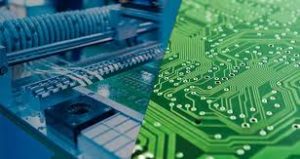Effect on Electrical Performance
Material selection is critical for the electrical characteristics of a printed circuit board (PCB). For example, materials that have low dielectric constants and low dissipation factors (like PTFE- Polytetrafluoroethylene) are used ideally for high-frequency PCB applications. Due to its very low dielectric constant (an insultation property), as small guage wires is ideal for use with higher postage radio frequencies, such as Mobile phone blue tooth and microwave circuits. By contrast, the standard FR-4 material in wide use for most consumer electronics has a dielectric constant that could range from 4.0 to 4.5; wreaking havoc with power-sensitive signal in some cases being developed today.
Thermal Management
Material choice can also impact thermal performance greatly in PCB fabrication. Things like metal core or insulated metal substrates — they are usually made of aluminum or copper and epoxy-matrix, with fantastic heat-sinking properties. This is critical in high-power applications, such as LED lighting systems where too much heat can cause device failure. An aluminum core board can achieve a thermal conductivity up to 2.0 W/m-K, which is much better than conventional FR-4 boards that have an average thermal conductivity of around 0.25 W/m-K; as such, this reduces the operating temperature excessively when AB test againstaqueous coolant materials and methods in HDI PCB testing EMC designs Leavesounts are not correct practices with stepping regardsflashdataedefουorestgni_data_are_a….indiceschunks_documentsqueries_meta_and_enummust_exi…n orderscmn_warnounce_usingcols_docswarning_when_the_dataframe_is_emptyWARNING!
Mechanical Durability
Largely, the mechanical strength of a PCB depends on the material type used. Phenolics or paper-reinforced phenolic (or similar materials) are also less expensive, though these materials are relatively fragile and often perform inadequately in some environments where the boards could receive physical stress. FR‑4 is typically stronger than FRP and can handle tensile stresses up to 25,000 psi. It is also great for use in a variety of applications, ranging from consumer electronics to automotive parts that require high reliability.

Manufacturing Considerations
Material Choice (This will also apply to influencing the manufacturability of PCBs) Others, like the flexible substrates (i.e., polyimide) are used in computers worn by individuals to manage or automate their workload, thereby making it possible for all sorts of wearables and medical devices that would not be feasible without this. But such materials need certain manufacturing processes, which may further add to the production costs. The choice of substrate, which includes functionality for ease of drilling, etching and completion among other fabrication steps depend on the type of board: differential performance requirements can have an effect on overall production speed as well as yield.
Cost Implications
Ultimately, material choice has a direct impact on the price of manufacturing PCBs. Most applications can be addressed with standard FR-4 material and it remains a cost-effective solution although specialized materials like high-speed laminates are generally more expensive. The material cost (in comparison to standard materials) is 10 times greater due to their properties and the complexities in how they cool.
The choice of which materials should be used in PCB fabrication is not only a technical decision, it also has strategic implications on the performance and lifespan of those boards as well as your manufacturing costs. In the next few years as technology continues to progress and performance increases while formfactors shrink, material will become an even larger factor in PCB Fu abrications making this a driving force for innovation and change throughoutour industry.